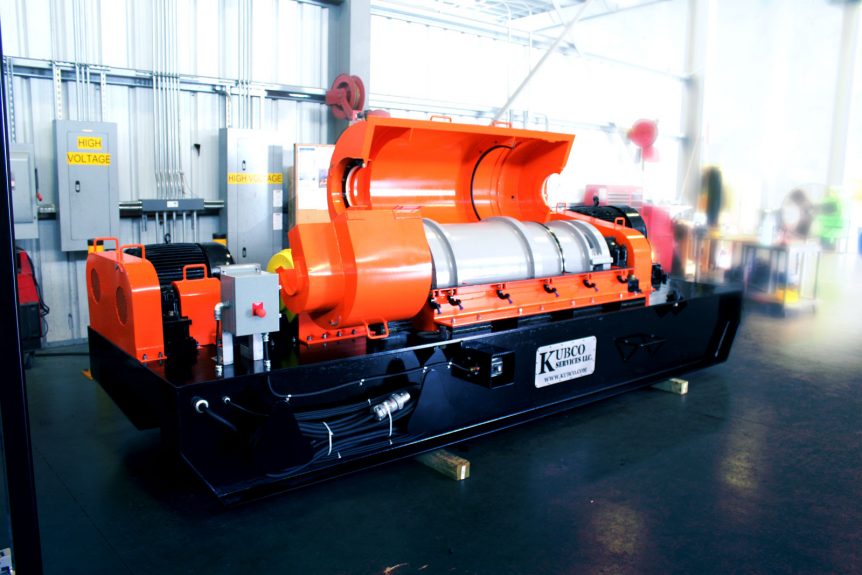Are you at risk?
Here is a list of the top five most common mistakes to avoid.
1. Follow Recommended Shutdown Procedures
While your centrifuge likely has an emergency stop button, it should only be used in case of an actual emergency!
Remember! Your centrifuge is full of solids and liquid. If left inside the bowl, this material will create excess vibration when the machine is powered on again, which leads to increased wear and damage. In more extreme cases, this material can dry and cause the machine to pack off.
Most modern centrifuge control panels are programmed to initiate a cleanout phase before the centrifuge is completely powered down.
If your centrifuge does not have this feature, you can clean out the centrifuge by adjusting settings on the control panel.
- Shut down the feed pump
- Flush the centrifuge
- Let the centrifuge continue to run until all solids are removed
2. Keep Your Feed Slurry Homogenous & Consistent
Maintaining a consistent and homogenous feed slurry is critical to both the performance and mechanical integrity of your centrifuge.
When the properties (i.e., density and solids concentration) of your feed product remains constant, your centrifuge runs more smoothly. Conversely, when the feed slurry properties fluctuate, the conveyor and gear box are subjected to a higher torque load followed by a diminished torque load. The oscillating torque increases the risk of gear box and back drive motor failure.
When density and solids concentrations change, operating parameters must also change to maximize centrifuge performance. By feeding the unit a consistent slurry, it allows the operator to optimize the centrifuge without having to make changes throughout the process.
3. Know the Point of Diminishing Return
Centrifuge operators do their best to get the most out of their equipment. Typically, this means a cleaner effluent and a dryer solid.
Clean Fluid
More solids can be removed by applying more G-Force and increasing the amount of time the product is subjected to a specific amount of G-Force. However, at some point, increasing G-Force and retention time will no longer result in a cleaner fluid. Once this point is reached, increasing bowl speed and retention time will only increase the wear on the centrifuge. Therefore, it is important to regularly test samples to determine when this point has been reached.
Dry Solids
Decreasing the speed of the conveyor both increases retention time and creates a dryer solid. However, decreasing the conveyor too much will increase torque and strain the gear box and back drive motor.
4. Ensure Your Centrifuge is Properly Balanced
A centrifuge that is not balanced properly will vibrate excessively, which increases wear and the risk of equipment failure. Why is your machine experiencing excessive vibration?
- Bowl or Scroll Imbalance Due to Normal Wear
- Bearing Wear or Failure
- Improper Scroll and Bowl Repair
- Collapsing Wall Cake
Following the OEM recommended maintenance schedule keeps wear to a minimum. At some point it is a good idea to have a centrifuge repair professional thoroughly inspect the equipment, replace any wearable components, and properly balance the rotating assembly.
5. Purge the Inner Bearing with Clean Grease
“Less than 30% of bearings ever see their fatigue limit and wear out.” 1
While most operators diligently grease the equipment bearings at regularly scheduled intervals, the inner bearings are most often overlooked.
When the inner bearings fail, the centrifuge must be sent to a repair shop for repair, which adds unnecessary cost and downtime to your operation. Replacing the inner bearings cannot be done in the field or plant location.
Fresh grease should be added until “clean grease” begins to come out of the purge holes on the opposite side of the grease zerk.
Be sure to follow the original manufacturer’s grease recommendation and lubrication schedule, both of which should be provided in the owner’s manual.
Share this Article

